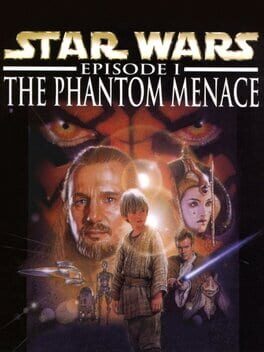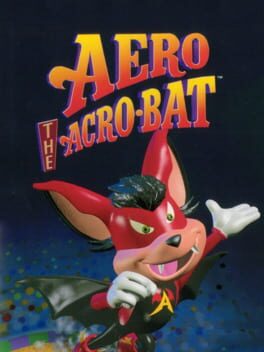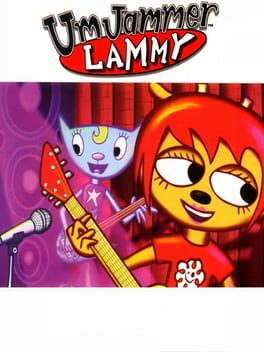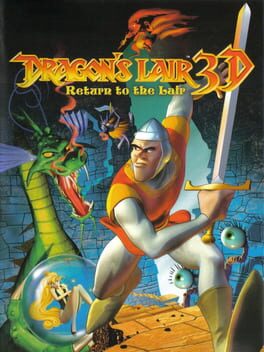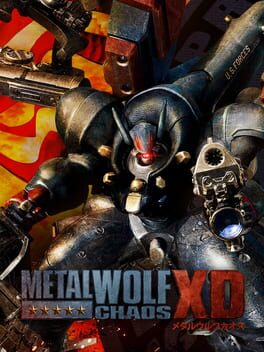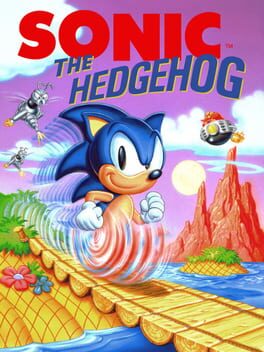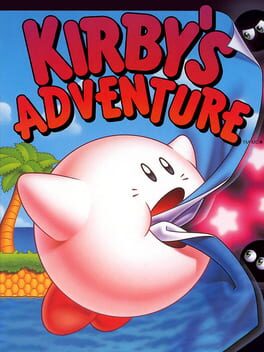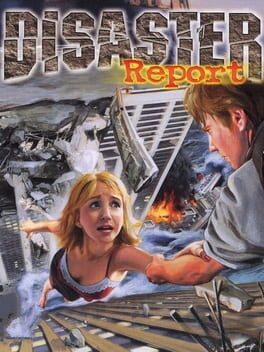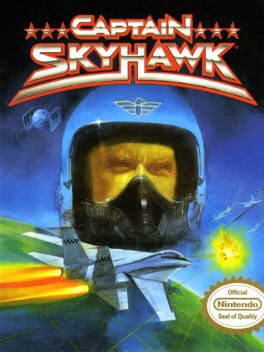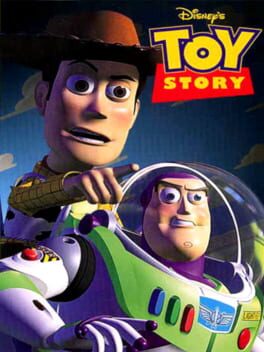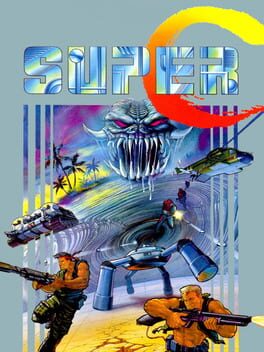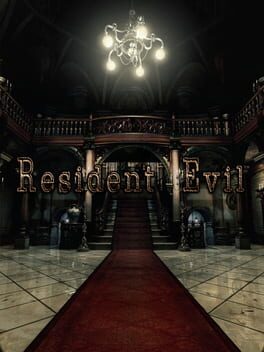TonyBlue87
BACKER
1991
Super Castlevania IV is a solid entry in the traditional whip-slingin' series. A few elements drag it down, but ultimately it delivers on the classic Castlevania experience. The major improvement is the inclusion of the 8-way whip attack. You're never short of options to deal with enemy positions, and you're gonna need them as this game absolutely loves to put enemies above, below, and all around you. Unfortunately, your whip can't save you from a number of vertical levels where the moment the ground goes off-screen everything turns into a death pit. Add in those enemy positions I mentioned and suddenly moments of the game feel incredibly cheap. Dodging flying axes while hanging from an auto-scrolling ring is not exactly the pinnacle of a good time. With checkpoints happening every 2 to 3 screen transitions, you're very likely going to end up in a cycle of replaying very long and tedious segments just to get back to the point where you got your last game over from phasing through a staircase you didn't know was beneath you.
On the other end of the difficulty spectrum are the bosses. While the levels can get very frustrating and require patience and precision, nearly every boss can just be tanked and wailed on until they explode. Sometimes bosses take up to 3 hits just for one pip of their health bar to drop, but if you're facing them with full health yourself it doesn't really matter as long as you stay on the offensive. In some ways it's a decent trade-off for the difficulty of the levels and platforming, but I personally wish that was reversed.
The music is also an uneven package. The title screen and opening level do an amazing job setting the tone for an eerie and exciting adventure, and the final moments of the game bring back the best Castlevania tracks in the series. The entire middle portion, however, is a sort of strange miasma of tonal drones and random noodling. Most tracks have no discernable melody. It's like a Dracula-themed jazz lounge show and is sadly unremarkable.
While it doesn't hit the best highs of the series, Super Castlvania IV is still fun and exciting and does feel like a proper adventure (the level map transitions are really terrific at chronicling your journey). Some of the level design is a straight bummer, and bosses offer very little challenge, but infinite continues and passwords keep you giving it "one more try." And when Simon's theme kicks in as you get down to the last moments of Dracula's health bar... damn does it feel good to be a Belmont.
On the other end of the difficulty spectrum are the bosses. While the levels can get very frustrating and require patience and precision, nearly every boss can just be tanked and wailed on until they explode. Sometimes bosses take up to 3 hits just for one pip of their health bar to drop, but if you're facing them with full health yourself it doesn't really matter as long as you stay on the offensive. In some ways it's a decent trade-off for the difficulty of the levels and platforming, but I personally wish that was reversed.
The music is also an uneven package. The title screen and opening level do an amazing job setting the tone for an eerie and exciting adventure, and the final moments of the game bring back the best Castlevania tracks in the series. The entire middle portion, however, is a sort of strange miasma of tonal drones and random noodling. Most tracks have no discernable melody. It's like a Dracula-themed jazz lounge show and is sadly unremarkable.
While it doesn't hit the best highs of the series, Super Castlvania IV is still fun and exciting and does feel like a proper adventure (the level map transitions are really terrific at chronicling your journey). Some of the level design is a straight bummer, and bosses offer very little challenge, but infinite continues and passwords keep you giving it "one more try." And when Simon's theme kicks in as you get down to the last moments of Dracula's health bar... damn does it feel good to be a Belmont.
As broken and ridiculous as its source material. In some ways it's an interesting approach to gameplay with dialogue trees and a fairly impressive amount of voice acting, but in another more accurate way it's an extremely frustrating game with lousy combat, abysmal escort missions, and an overall level of jank that leads to hilarious glitches like Qui-Gon leaping through a floor and plummeting to the core of Tatooine or Obi-Wan dying in a cutscene by getting trapped in the laser walls while trying to reach Darth Maul. A part of me will always love it for being so weird and unique, but I have no reason to ever play it again.
1993
Aero the Acro-bat is a three ring circus of bullshit with all the show-stopping trademarks of a failed mascot platformer: slippery momentum, uneven enemy hitboxes, a character that outruns the camera at full speed and runs into enemies you never saw coming, and an endless supply of one-hit-kill traps hidden off-screen. You will launch yourself out of a cannon and into a spike trap you had no way of knowing about dozens of times. You will have no idea how many hits some enemies take, or if they're even taking damage at all. And you will restart the multiple autoscroller sections again and again and again.
There are a few high points in the game, though. For one, the music is fantastic throughout. Nearly every level has a completely unique track, and they all have great energy and arrangement. Secondly, the game puts extra lives absolutely everywhere, almost as if they knew the general gameplay was unfair. Lastly, the final boss fight is genuinely exciting, with timed platforming and multiple phases that are checkpointed fairly. It does last a bit too long, but it's a high point to end an otherwise extremely middling experience.
Aero wants to be the next big mascot, but he's just another victim of the 90s "rad" era, with his sunglasses and moonwalking not being nearly enough to distract from a game that's just not all that fun to play. When it's not being outright unfair, it's just downright "okay." This star of the big top is a big flop.
There are a few high points in the game, though. For one, the music is fantastic throughout. Nearly every level has a completely unique track, and they all have great energy and arrangement. Secondly, the game puts extra lives absolutely everywhere, almost as if they knew the general gameplay was unfair. Lastly, the final boss fight is genuinely exciting, with timed platforming and multiple phases that are checkpointed fairly. It does last a bit too long, but it's a high point to end an otherwise extremely middling experience.
Aero wants to be the next big mascot, but he's just another victim of the 90s "rad" era, with his sunglasses and moonwalking not being nearly enough to distract from a game that's just not all that fun to play. When it's not being outright unfair, it's just downright "okay." This star of the big top is a big flop.
1999
If Parappa the Rapper is a low-level drug trip groove through an increasingly weird week, then Um Jammer Lammy is the ecstasy-laced fever dream weekend. The story follows Lammy trying to get to her band's gig on time but constantly running into characters who insist she helps them with their high-stress jobs. Things move at such a frantic pace that it's difficult to have any idea what's going on. Characters are constantly yelling, cutscenes have 5 edits every second, and, unlike Parappa's story beats, Lammy's hurdles are completely random and unrelated to her personally, so it's just a blur of complete chaos. Unfortunately, that carries into the gameplay itself.
Lammy's music is seemingly written to be intentionally confusing. Nearly every song is plagued by bizarre time signatures, button prompts that don't match the cadence of the lyrics, and segments that require a level of speed and button-mashing that Parappa never came close to. This game also amplifies a problem in the first game: the small delay between pressing a button and the audio of Lammy's guitar actually playing makes it absolutely impossible to keep time consistently. Most levels feel like they're won with dumb luck, especially Level 6 that features an atonal, arhythmic stage aria. Most times failure comes at the very last moment of a song, forcing you to start from the top and struggling against the game's design again and again.
Um Jammer Lammy feels like it learned all the wrong lessons from Parappa, which already had its own issues. Chaotic in every way, from story to gameplay, Lammy frustrates and annoys with each new riff screamed at you by another anthropomorphic psychopath. Much like Lammy's guitar, this game is out of tune.
Lammy's music is seemingly written to be intentionally confusing. Nearly every song is plagued by bizarre time signatures, button prompts that don't match the cadence of the lyrics, and segments that require a level of speed and button-mashing that Parappa never came close to. This game also amplifies a problem in the first game: the small delay between pressing a button and the audio of Lammy's guitar actually playing makes it absolutely impossible to keep time consistently. Most levels feel like they're won with dumb luck, especially Level 6 that features an atonal, arhythmic stage aria. Most times failure comes at the very last moment of a song, forcing you to start from the top and struggling against the game's design again and again.
Um Jammer Lammy feels like it learned all the wrong lessons from Parappa, which already had its own issues. Chaotic in every way, from story to gameplay, Lammy frustrates and annoys with each new riff screamed at you by another anthropomorphic psychopath. Much like Lammy's guitar, this game is out of tune.
Dirk the Daring makes the transition to 3D with all the grace and elegance of... well, Dirk the Daring. Dragon's Lair 3D has the feel of one of "those games." The kind from this generation where it all works functionally and there's a clear amount of love put into it, but lacking any polish. Combat is extremely clunky, every enemy is programmed to stun lock you, jump inputs are often a suggestion, and audio bugs from huge differences in volume to sounds playing randomly in the background fill nearly every moment of the experience. In a very unintentional way, these flaws keep a lot of the "spirit" of the original FMV game alive. It's frustrating and often unclear what you did wrong or what was actually meant to happen.
All that said, it still works as an action-platformer. For the parts that work, there's a decent amount of charm in Dirk's character and animation, the environments are simple but vibrantly colored, and the cel-shaded graphics hold up decently (with the exception of Daphne, who appears to be made of 6 thick black lines fighting with each other for dominance). It's not the most compelling game in the world, and it gets very aggravating in the back-half when they start adding "new" content that goes beyond the ending of the original game, but there's a decent little adventure here led by one of gaming's more endearing heroes.
All that said, it still works as an action-platformer. For the parts that work, there's a decent amount of charm in Dirk's character and animation, the environments are simple but vibrantly colored, and the cel-shaded graphics hold up decently (with the exception of Daphne, who appears to be made of 6 thick black lines fighting with each other for dominance). It's not the most compelling game in the world, and it gets very aggravating in the back-half when they start adding "new" content that goes beyond the ending of the original game, but there's a decent little adventure here led by one of gaming's more endearing heroes.
2019
Metal Wolf Chaos is incredible and terrible in equal measure across every element. The story concept is completely insane and hilarious, but the game feels like it's missing 80% of the cutscenes that explain how anything gets from one point to another. There's a point where you talk to a character, it fades to black, and in the next cutscene they've been kidnapped and ask if you can ever forgive them for betraying you. There is zero explanation for this series of events and it is never addressed afterwards. The voice acting is "terrible" in the best way, but the writing itself is clunky with abysmal broken English and lines of dialogue that get cut off mid-sentence. The action is completely over the top and it feels great to save America by blowing most of it up, but weapons do a seemingly random amount of damage on every shot, anything that's not a rocket launcher is effectively useless, and the bosses have unbelievably cheap attacks that tear through your health faster than an executive order. A total lack of checkpoints guarantees you'll be slogging through entire levels, bracing for the return of a boss' third-phase invisible attack.
To the outside observer, Metal Wolf Chaos is loud, obnoxious, deliriously over-the-top, with explosions and patriotism as far as the eye can see. To the player, it's a series of half-baked systems designed to undermine the entire experience and, in some ways, actively work against its enjoyment.
To put it simply: it's the perfect American game.
To the outside observer, Metal Wolf Chaos is loud, obnoxious, deliriously over-the-top, with explosions and patriotism as far as the eye can see. To the player, it's a series of half-baked systems designed to undermine the entire experience and, in some ways, actively work against its enjoyment.
To put it simply: it's the perfect American game.
1991
A rarely talked about adventure for the blue blur but a solid platformer that deserves more attention. Much more straightforward and simple than the Genesis games, which works to its advantage, with decently tight controls. Runs into a few cheap deaths/leap of faith moments in its final stages, but this remains a favorite of mine from the stellar 2D Sonic era.
This review contains spoilers
Legacy of Kain: Soul Reaver tells the story of Raziel, mouthless, blue vampire boy, facing his greatest foe: box pushing puzzles. Ok, actually it tells the story of... well, it tells PART of the story of Raziel's fight with Kain, his former vampire boss. He enacts this battle by hunting down his brothers-in-arms, devouring their souls to gain new abilities, Metroidvania style, to explore more areas of a large, interconnected world, all the while being guided by a faceless elder god who never really explains why any of this is happening.
Soul Reaver comes from that magical turning point in gaming history where developers realized that voice acting could actually be good, and this is by far the best part of the game. Characters speak in pseudo-Shakespearean riddles about betrayal and purpose with a level of seriousness that adds proper weight to the setting, bordering juuuuuust on the edge of being a little too edgy for its own good. All the performances hold up even by today's standards, particularly Raziel's self-serious, single-minded internal monologue. It's all pretty one-note, but it's a good note that suits the Gothic goings-ons. Unfortunately, no amount of high-quality acting can outplay the lesser parts of the game.
Soul Reaver is a lot of old game design wrapped up in much prettier packaging. Raziel's adventure takes place in one massive environment with no visible loading screens. Teleportation gateways serve as shortcuts around the world, but even those hide any perceptible loading of assets. It's an extremely impressive technical feat for a game of this size from 1999. Raziel travels through swirling lakes, vampiric temples, and a massive cathedral that is, in fact, a giant pipe organ of sorts. It's all very unique, but the creativity was spent entirely on these settings and not so much on what to fill them with. Despite the sprawling environments and varied enemies that inhabit them, the main thing Raziel spends his time doing is pushing boxes. Literally every level has multiple box pushing puzzles. Every so often he'll flip a switch or pull a lever, put it's usually in service of getting Raz to the next bunch of boxes to push. It's tedious and wears thin almost immediately. Credit where it's due, most of the overall puzzles are built into the environment itself, being a part of the natural setting, but rounding the corner to see another stack of boxes just waiting for Raz to push around is sigh-inducing.
When he's not pushing boxes, Raziel is leaping, climbing, or swimming around the world. He can swap between the physical and material planes pretty much at will (returning to the physical world requires using a highlighted spot in the environment), and the area around him can shift dramatically between either version. It's a neat idea and offers some cool visuals, but both realms are stuck with Raziel's dated controls and camera. He often slides to a stop, turns in wide circles, and decides randomly when to use his high jump, making precision platforming more aggravating than rewarding. Add a camera that usually wants to be as close to Raz as possible and it all becomes a harsh reminder of how early 3D platformers played.
Fortunately, levels culminate in a boss "battle" against one of Raziel's brothers, and most of these are memorable high points of the journey. Very rarely is a fight won with brute strength. The majority of Raz's brothers are bested with some sort of creative puzzle solution, turning their powers back against them. It's a satisfying way of defeating these creatures that have been twisted and deformed by the passing of hundreds of years, whose sole purpose seems to be betting Raziel that he can't kill them. Each time he proves them wrong, he absorbs their soul and special ability, which enables him to traverse more parts of the environment, tracking down Kain to his final hideaway.
At the end, however, all of this fratricide leads to a great big reveal of... nothing. The game's story ends with a defeating "To Be Continued..." text screen. Nothing is answered, nothing is explained, no one ever speaks in any specifics. Raziel is never clued into anything that Kain is actually up to, and is instead forced to, I assume, get answers in the sequel that wouldn't appear until the PS2. It's a deeply unsatisfying ending that comes at a point when things seem to be picking up, not concluding.
Legacy of Kain: Soul Reaver is rightfully remembered for terrific voice acting, dramatic presentation, and gorgeous environment and character design. It's rightfully less remembered for its janky controls, repetitive combat, and abundance of box pushing puzzles. Overall it's a memorable experience that shows off some of the best that the PS1 era had to offer, but, much like the beginning of Raziel's tale, many years have passed and many things have changed in the world of games, making it a worthwhile journey with a heavy dose of caveats.
Soul Reaver comes from that magical turning point in gaming history where developers realized that voice acting could actually be good, and this is by far the best part of the game. Characters speak in pseudo-Shakespearean riddles about betrayal and purpose with a level of seriousness that adds proper weight to the setting, bordering juuuuuust on the edge of being a little too edgy for its own good. All the performances hold up even by today's standards, particularly Raziel's self-serious, single-minded internal monologue. It's all pretty one-note, but it's a good note that suits the Gothic goings-ons. Unfortunately, no amount of high-quality acting can outplay the lesser parts of the game.
Soul Reaver is a lot of old game design wrapped up in much prettier packaging. Raziel's adventure takes place in one massive environment with no visible loading screens. Teleportation gateways serve as shortcuts around the world, but even those hide any perceptible loading of assets. It's an extremely impressive technical feat for a game of this size from 1999. Raziel travels through swirling lakes, vampiric temples, and a massive cathedral that is, in fact, a giant pipe organ of sorts. It's all very unique, but the creativity was spent entirely on these settings and not so much on what to fill them with. Despite the sprawling environments and varied enemies that inhabit them, the main thing Raziel spends his time doing is pushing boxes. Literally every level has multiple box pushing puzzles. Every so often he'll flip a switch or pull a lever, put it's usually in service of getting Raz to the next bunch of boxes to push. It's tedious and wears thin almost immediately. Credit where it's due, most of the overall puzzles are built into the environment itself, being a part of the natural setting, but rounding the corner to see another stack of boxes just waiting for Raz to push around is sigh-inducing.
When he's not pushing boxes, Raziel is leaping, climbing, or swimming around the world. He can swap between the physical and material planes pretty much at will (returning to the physical world requires using a highlighted spot in the environment), and the area around him can shift dramatically between either version. It's a neat idea and offers some cool visuals, but both realms are stuck with Raziel's dated controls and camera. He often slides to a stop, turns in wide circles, and decides randomly when to use his high jump, making precision platforming more aggravating than rewarding. Add a camera that usually wants to be as close to Raz as possible and it all becomes a harsh reminder of how early 3D platformers played.
Fortunately, levels culminate in a boss "battle" against one of Raziel's brothers, and most of these are memorable high points of the journey. Very rarely is a fight won with brute strength. The majority of Raz's brothers are bested with some sort of creative puzzle solution, turning their powers back against them. It's a satisfying way of defeating these creatures that have been twisted and deformed by the passing of hundreds of years, whose sole purpose seems to be betting Raziel that he can't kill them. Each time he proves them wrong, he absorbs their soul and special ability, which enables him to traverse more parts of the environment, tracking down Kain to his final hideaway.
At the end, however, all of this fratricide leads to a great big reveal of... nothing. The game's story ends with a defeating "To Be Continued..." text screen. Nothing is answered, nothing is explained, no one ever speaks in any specifics. Raziel is never clued into anything that Kain is actually up to, and is instead forced to, I assume, get answers in the sequel that wouldn't appear until the PS2. It's a deeply unsatisfying ending that comes at a point when things seem to be picking up, not concluding.
Legacy of Kain: Soul Reaver is rightfully remembered for terrific voice acting, dramatic presentation, and gorgeous environment and character design. It's rightfully less remembered for its janky controls, repetitive combat, and abundance of box pushing puzzles. Overall it's a memorable experience that shows off some of the best that the PS1 era had to offer, but, much like the beginning of Raziel's tale, many years have passed and many things have changed in the world of games, making it a worthwhile journey with a heavy dose of caveats.
1993
2002
Disaster Report is much like the island it takes place on: shaky, uneven, full of cracks, and a man-made wonder. It's about as standard an adventure game as they come; walk around, find an item, use item on "door," repeat. Characters are all one-note, with lines of dialogue delivered in wildly different tones and volumes within a single conversation. Time is split between wandering around looking for a single key item to progress and running away from collapsing rubble, rushing waves, or tumbling trucks, and it's all achieved with not-the-jankiest-but-damn-close controls from the generation. The lack of direct camera control will kill you more than any natural disaster. You have the ability to call out to NPCs, which makes them wave at you and literally nothing else. You have to drink water to do actions and maintain health, but on Normal difficulty water is in such high supply that you will only ever die from one-hit "event" kills rather than taking damage from the world around you. Fortunately, checkpoints are frequent, so you're never losing too much progress whenever you think you're watching a cutscene but were, in fact, supposed to be running away from the random tsunami.
Despite the uneven experience of actually playing it, it all strangely works together to make a unique and charming game. The story is revealed in little chunks that are paced out pretty well, adding mystery to what was originally just a survival story. Of course for every reveal there is something that makes absolutely no sense (like villains inexplicably refusing to spend a bullet on your character because it will "take too long") that adds to the wacky tone and nature of the whole experience. There are multiple endings depending on certain actions you take, complete with a path-split decision halfway through the game to follow different characters, and they range from ridiculous to abrupt to depressing.
There is a lot of love put into Disaster Report, and as a result there is a lot to love about it. Everything moves along at a decent pace, characters are simultaneously over the top and endearing, and there's very little of the game that's outright busted so much as just unpolished. In all honesty, the game gets more of a 2.5 star rating from a gameplay perspective, but I'm awarding it a full extra star for including the most insane cutscene involving two old men on a rooftop to ever be portrayed in media.
Despite the uneven experience of actually playing it, it all strangely works together to make a unique and charming game. The story is revealed in little chunks that are paced out pretty well, adding mystery to what was originally just a survival story. Of course for every reveal there is something that makes absolutely no sense (like villains inexplicably refusing to spend a bullet on your character because it will "take too long") that adds to the wacky tone and nature of the whole experience. There are multiple endings depending on certain actions you take, complete with a path-split decision halfway through the game to follow different characters, and they range from ridiculous to abrupt to depressing.
There is a lot of love put into Disaster Report, and as a result there is a lot to love about it. Everything moves along at a decent pace, characters are simultaneously over the top and endearing, and there's very little of the game that's outright busted so much as just unpolished. In all honesty, the game gets more of a 2.5 star rating from a gameplay perspective, but I'm awarding it a full extra star for including the most insane cutscene involving two old men on a rooftop to ever be portrayed in media.
1990
Captain Skyhawk is a fast-paced, arcade-style shooter that offers a short, solid challenge with only a few frustrating bits dragging it down from top speed. The majority of the game is made up of generally standard vertical shoot-em-up levels usually ending in a "boss fight" against a base. You have a significant amount of horizontal movement available, which makes for much wider levels than typically found in the genre, and you'll need the space to dodge enemy gunfire while avoiding slamming into the environment.
There are a number of frustrating moments in these sections: levels that require you to drop supplies to allies by aiming for a relatively small hole in the ground force you to fly through the entire level again before getting another chance, enemy fire is sometimes invisible (possibly due to the NES sprite limit) and leaves you questioning what even hit you, one level features a blinding bright pink background, and a later level features exploding mines that seem to hit you completely arbitrarily.
Fortunately, these segments are broken up by After Burner-style levels where shooting down fighters awards credits that can be used to upgrade your weapons. Each series of levels ends with docking with your space station (which is just cool), and deciding where to spend your cash. The only upgrade that really matters, though, is your standard cannon which when fully upgraded becomes an endless stream of bullets. From there, it's back down to another set of vertical levels.
At only 9 "missions," the game ends juuuuuust before it overstays its welcome (and your reward is a misspelled congrats screen). Exploding for seemingly no reason gets frustrating at times, but overall Captain Skyhawk is a fun shoot-em-up that can be beaten in a single sitting with a little patience and a side of white-knuckled panic.
There are a number of frustrating moments in these sections: levels that require you to drop supplies to allies by aiming for a relatively small hole in the ground force you to fly through the entire level again before getting another chance, enemy fire is sometimes invisible (possibly due to the NES sprite limit) and leaves you questioning what even hit you, one level features a blinding bright pink background, and a later level features exploding mines that seem to hit you completely arbitrarily.
Fortunately, these segments are broken up by After Burner-style levels where shooting down fighters awards credits that can be used to upgrade your weapons. Each series of levels ends with docking with your space station (which is just cool), and deciding where to spend your cash. The only upgrade that really matters, though, is your standard cannon which when fully upgraded becomes an endless stream of bullets. From there, it's back down to another set of vertical levels.
At only 9 "missions," the game ends juuuuuust before it overstays its welcome (and your reward is a misspelled congrats screen). Exploding for seemingly no reason gets frustrating at times, but overall Captain Skyhawk is a fun shoot-em-up that can be beaten in a single sitting with a little patience and a side of white-knuckled panic.
1997
An amazingly weird action game that is emblematic of the Wild West of game development of the 90s. Super inventive art and game design that almost makes it seem like a fake game made for a TV show. Inventive elements like the sniper mode make it an incredibly unique experience, and while it may be a little rough around the edges by modern standards, there's quite literally nothing like it.
1995
1990
Super C is a great follow-up to the original Contra. Everything gets an upgrade: the backgrounds and sprites are bigger and more detailed, the music gets broader range with bassy orchestra hits, and levels are given more varied layouts with vertical and horizontal traversal within the same environment. The pseudo-3D hallway crawls of the first game are replaced with far more challenging and interesting top-down levels that would later be even more intense in Contra 3. The standard run, jump, n' shoot formula is just as strong as ever, with Spread still being the "Activate Easy Mode" weapon of choice.
It's not all glorious warfare for Bill and Lance, though, as there are a few elements that hold it back from a perfect experience. Enemies love to spawn from behind you on the edge of the screen and catch you off guard. Some environmental gimmicks/mechanics can lock you in an inescapable death loop if you get an unfortunate pattern, particularly on the "downward" vertical levels with blind drops. Most unfortunate of all, however, is bosses offer practically zero challenge. Most of them are motionless (albeit impressively designed) full-screen monster towers, but only 3 out of 8 require you to do any real dodging maneuvers. One boss in particular can be beaten without moving at all, since your attacks destroy theirs. If you have Spread going into any of these fights, the bosses might as well have not even bothered showing up to work that day for how quickly they're dispatched.
Super C does exactly what you want out of a sequel: gives you a slightly better, slightly more challenging expansion of the game that came before it. Even with a few old-school game design flaws hanging about, it's still one of the absolute best action games on the NES.
It's not all glorious warfare for Bill and Lance, though, as there are a few elements that hold it back from a perfect experience. Enemies love to spawn from behind you on the edge of the screen and catch you off guard. Some environmental gimmicks/mechanics can lock you in an inescapable death loop if you get an unfortunate pattern, particularly on the "downward" vertical levels with blind drops. Most unfortunate of all, however, is bosses offer practically zero challenge. Most of them are motionless (albeit impressively designed) full-screen monster towers, but only 3 out of 8 require you to do any real dodging maneuvers. One boss in particular can be beaten without moving at all, since your attacks destroy theirs. If you have Spread going into any of these fights, the bosses might as well have not even bothered showing up to work that day for how quickly they're dispatched.
Super C does exactly what you want out of a sequel: gives you a slightly better, slightly more challenging expansion of the game that came before it. Even with a few old-school game design flaws hanging about, it's still one of the absolute best action games on the NES.
2014
An amazing remake and a solid port that generally stands the test of time. The voice acting has aged to the point where now it's just as cheesy and ridiculous as the original, but that lends a sense of goofy fun to the experience. The fixed camera angles make jump scares just as effective as they were when first released, and the tank controls are surprisingly playable from start to finish (though the modern analog controls are a welcome addition). Unfortunately, the overall gameplay style hasn't aged particularly well, which is mostly running back and forth from item boxes to hopefully take the right key item with you while juggling an extremely limited inventory space. It just adds a level of tedium that feels like a point n' click game with extra steps. At the end of the day, however, it's still a fun and effective survival horror (puzzle) game, and definitely deserves its lifetime status as one of the greats of the genre.

